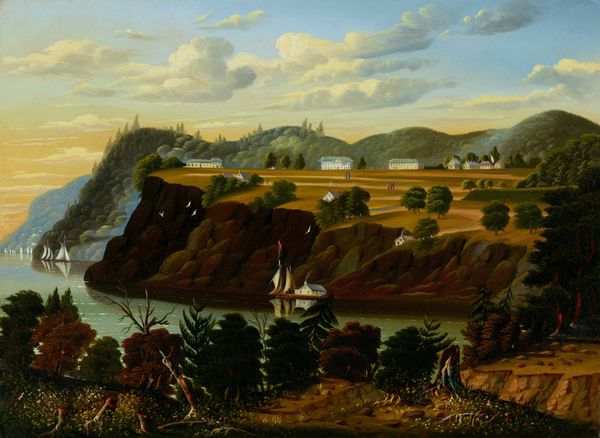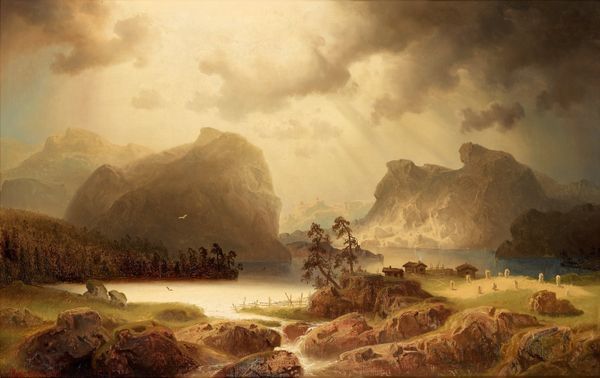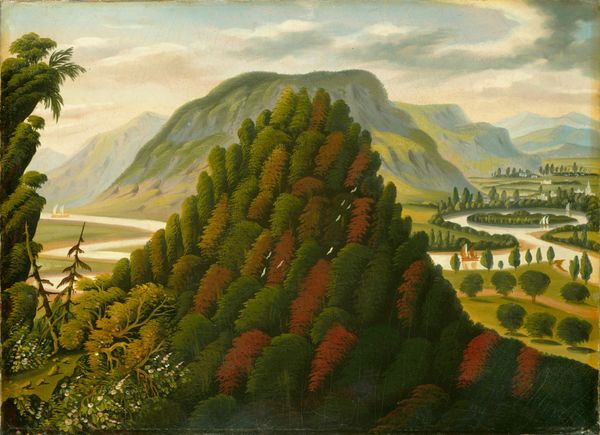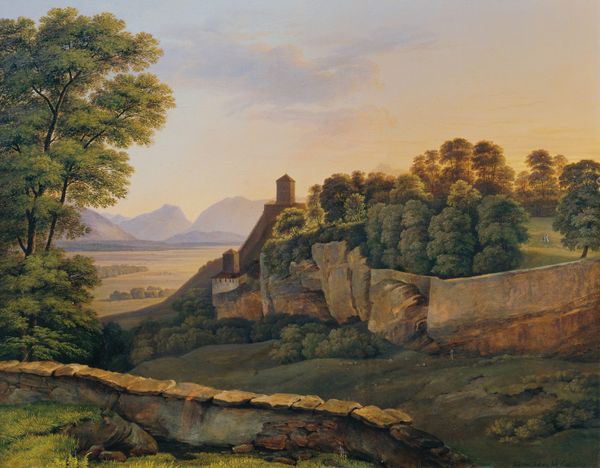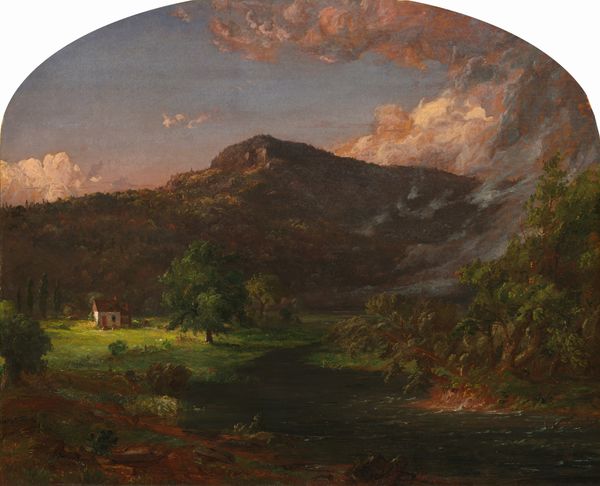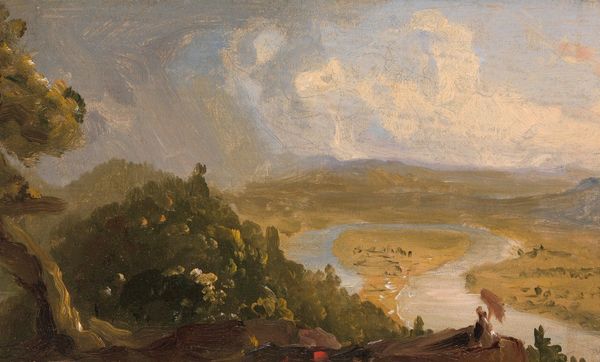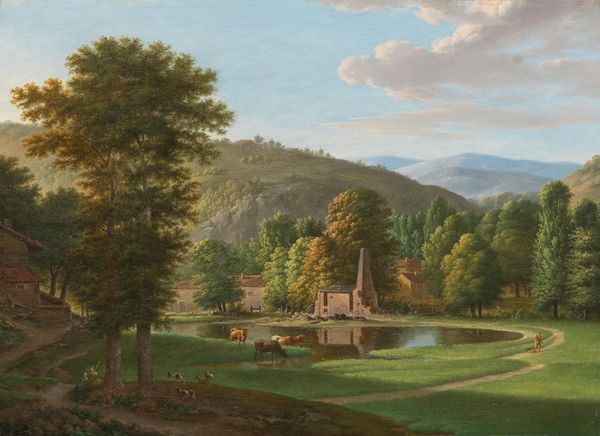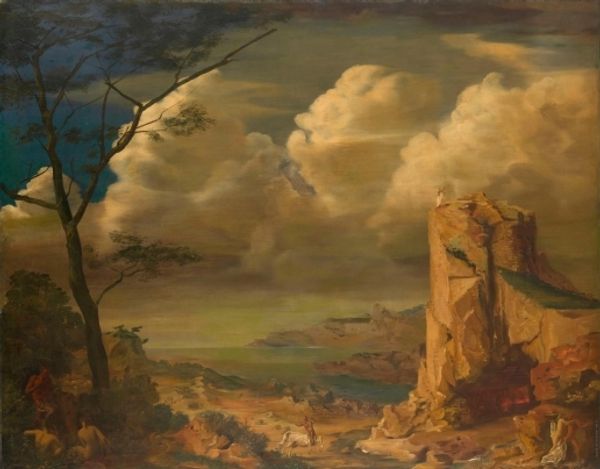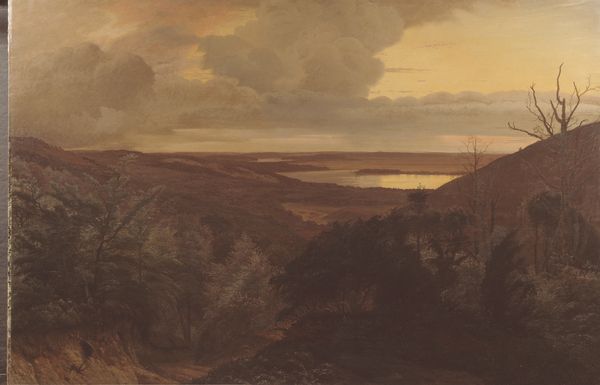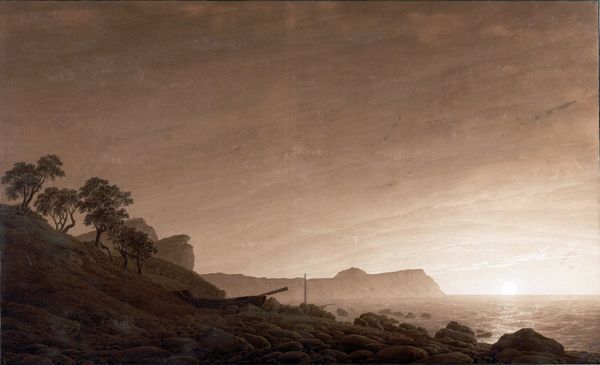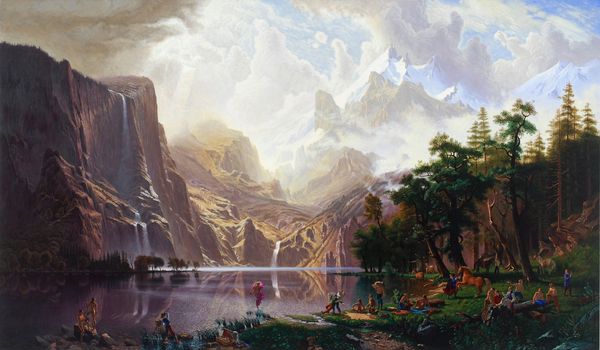
Dimensions: 22 1/2 x 30 1/2 in. (57.2 x 77.5 cm)
Copyright: Public Domain
Editor: So, this is *Lake George and the Village of Caldwell*, painted between 1847 and 1850 by Thomas Chambers. It's an oil painting, and I find its blend of realism and slightly flattened perspective really striking. How do you interpret this work, especially considering its historical context? Curator: Well, beyond its surface appeal as a pleasant landscape, let’s consider what Chambers might be silently protesting, or perhaps more accurately, who he's centering through landscape. Think about whose gaze this picture invites. This wasn't just about capturing the beauty of the American landscape; it was about defining who belonged, and who benefited, from the concept of the ‘American Dream’ at that time. Are there any figures visible that may be indentured? Editor: I don’t see anyone that could be identified in that manner. I do see sailing ships which suggest commercial traffic. But if this painting excludes some individuals or groups, how can we even know for sure? Curator: Exactly! That absence is telling. We can read these landscapes as expressions of nationhood that are as much about inclusion as they are about very specific, coded forms of exclusion. Consider who isn't represented—Indigenous people displaced from that very land. Think about the laborers who enabled leisure activities depicted on the lake. Are they present in the frame? No. Editor: That's a powerful point. So, reading it as a sort of… purposeful omission, almost a political act, even within its seemingly innocent presentation? Curator: Precisely. It encourages us to challenge what is being normalized through representation. We begin to see the silent power structures. The concept of manifest destiny comes to mind…the paintings sell the dream that omits the original inhabitants… Editor: This makes me view it very differently. What I initially perceived as just a pretty landscape now feels much more complicated. Curator: And that complexity, that discomfort, is where the real dialogue begins. It is this historical understanding, viewed through the intersectional lens of social injustice that brings these artworks into contemporary critical discussion.
Comments
No comments
Be the first to comment and join the conversation on the ultimate creative platform.
